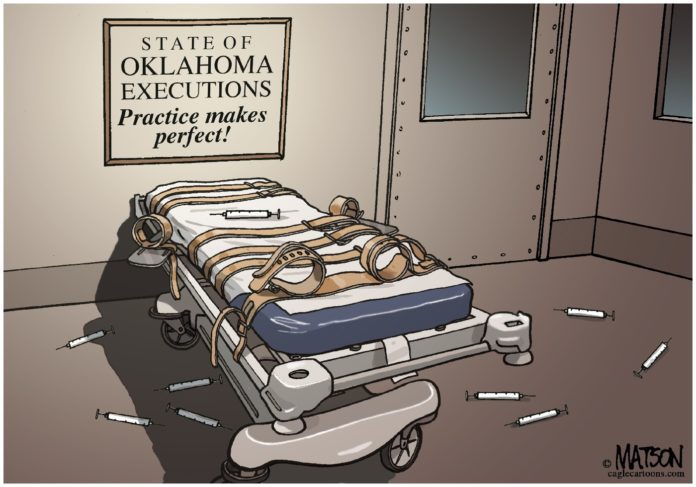The U.S. Supreme Court spent days and days recently hearing all the pros and cons of providing “spiritual guidance” to a particular inmate by the name of John H. Ramirez during his pending execution in Texas.
The argument now is, can the spiritual advisor actually touch the inmate while he is dying; can he utter a prayer or must he remain silent; what is the length of the prayer; can he stand closer than 28 inches while touching the inmate as he passes from this world courtesy of the executioner in the Huntsville, TX death house and … nine very smart lawyers, aka Supreme Court justices, are all over the block on the answers to these and many other questions raised by both the defense lawyers and the prosecutors.
Other nuances related to this particular “murder by state government” posited: 1. How many guards must accompany the chaplain into the death chamber; 2. Where do they stand; 3. If the chaplain does more than pray and touch, when and how do the guards react; and what if the process is delayed due to a chaplain’s action [pulling out the injections, for example? Can they be restored and the execution restarted and, and, and again.
In fact, of the 30 or so states that still have the death penalty, circumstances down to and including the physical size of the execution room will impact how the process could vary from state to state regardless of and in conflict with whatever decisions are eventually made in the Ramirez case in Texas.
In short, what I am saying is, carrying out a death penalty regardless of the state is always complicated, lengthy, controversial, often messy and, in addition, the Supreme Court makeup is an ever-changing reality as well. Six to three todays generally for the death penalty could be five to four next week.
Some bleeding heart liberals might even say that possibility in itself is cruel and unusual punishment, which raises a whole new constitutional question all by itself.
As for me, the Ramirez case currently being heard by The Supremes is just one more example of why I think America should give up on the process of trying to execute a handful of murderers each year. A better solution would bring certainty of sentencing and for most victims that would be a sentence of life without parole. End of story.
No appeals, no delays, no lengthy agony for the victim’s family members or the inmate. The sentence would be known, never could be amended and, of course, could not changed in the future.
I realize my suggestion is imperfect but not remotely as much as the current one which offers zero certainly to either the victim’s family or the inmate and his family.
In closing, perhaps Oklahomans who have read this column may want to examine the hills and valleys, ups and downs, winning and losing appeals of inmate Julius Jones, scheduled to be executed by the state this Thursday – unless Gov. Stitt signs the clemency request offered not once but twice by the state Pardon and Parole Board. First decision on a 3-2 vote, the second by 3-1.
Since at least two of the affirmative votes for clemency each time were Stitt appointees to the board, perhaps he will be swayed by the judgment of those he trusted with such life and death decisions.







